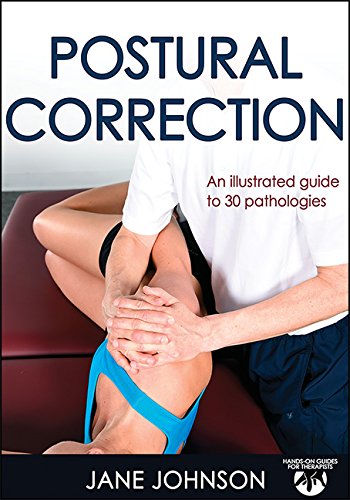

Most ebook files are in PDF format, so you can easily read them using various software such as Foxit Reader or directly on the Google Chrome browser.
Some ebook files are released by publishers in other formats such as .awz, .mobi, .epub, .fb2, etc. You may need to install specific software to read these formats on mobile/PC, such as Calibre.
Please read the tutorial at this link: https://ebookbell.com/faq
We offer FREE conversion to the popular formats you request; however, this may take some time. Therefore, right after payment, please email us, and we will try to provide the service as quickly as possible.
For some exceptional file formats or broken links (if any), please refrain from opening any disputes. Instead, email us first, and we will try to assist within a maximum of 6 hours.
EbookBell Team

5.0
50 reviewsPostural Correction presents 30 of the most commonly occurring postural conditions in a comprehensive format, providing hands-on therapists and body workers the knowledge and resources to help clients address their malalignments. Focusing on treatment rather than assessment, it takes a direct approach and applies specific techniques to improve posture from an anatomical rather than aesthetic perspective.
Primarily concerned with the lengthening of shortened tissues to help realign body parts, Postural Correction offers a collective approach to remedying malalignment. Techniques vary for each posture correction, including deep tissue massage, simple passive stretches, soft tissue release, common trigger points, and gentle limb traction. Because weak or poorly functioning muscles may contribute to postural problems, the text notes what muscles need to be strengthened and includes recommendations on techniques. Suggestions also are made for those postures that are difficult to correct with hands-on techniques, such as scoliosis, genu valgum (knock knees), and genu varum (bow legs).
Recognizing that the work clients can carry out independently is a crucial component of long-term postural correction, this guide includes information on how clients can continue their therapy independently between or at the conclusion of their therapy sessions. Therapists can take these techniques and recommendations to advise, educate, and guide clients in their efforts. Much attention is paid to lifestyle, activities, and habitual use or resting of a body part that may have led to the initial pain and malalignment.
Structured by anatomical regions of the body to make accessing information quick and easy, Postural Correction tackles postural concerns commonly affecting the spine; pelvis; upper limbs, including the shoulder and elbow; and lower limbs, including the hip, knee, ankle, and foot. Examples from various sports and demographics such as the elderly offer contextual and applied value. Descriptions avoid biomechanical jargon and instead focus on simple, clear explanations. Information is also included for when hands-on techniques are limited in correcting a particular posture.
Special features make this book unique and useful:
• Full-color anatomical illustrations and photographs present a clear visual of what will help bring about postural change.
• Consistency with the other titles in the Hands-On Guides for Therapists series ensures that the manual therapies throughout this book are easily accessible.
• An overview of each malalignment includes the muscles that are shortened or lengthened, notes about each posture, a bulleted list of ideas grouped according to whether these are carried out by the therapist or the client, and rationale for the suggested corrective techniques.
• Concluding comments summarize the information for access at a glance.
All body workers know that the human anatomy is interlinked, making it difficult to entirely separate any unique part of the musculoskeletal system from another. Yet at times that is necessary to get to the root of an issue. Postural Correction, a valuable adjunct to any joint‐manipulative technique, will help professionals do both by correcting malalignments at a specific joint and with a more holistic approach.